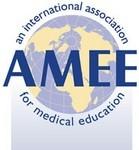Monday 31st August 2009: The AMEE 2009 meeting opened with a key note speech from Hilliard Jason from the University of Colorado, Denver.
 In his session, entitled “Rethinking medical education: Some needed, overdue reforms” Hilliard Jason described the shift in medical education towards working with new technologies. In particular, how student bodies are embracing the Internet and Web 2.0 technologies, meaning that medical teaching institutions will have to adapt.
In his session, entitled “Rethinking medical education: Some needed, overdue reforms” Hilliard Jason described the shift in medical education towards working with new technologies. In particular, how student bodies are embracing the Internet and Web 2.0 technologies, meaning that medical teaching institutions will have to adapt.
He says: “We are experiencing what is probably the largest change in our student bodies. We are welcoming the digital generation, and the consequences will reverberate for years.”
He went on to describe in detail advances in neuroscience, saying: “The brain is an amazing creation. What’ it’s capable of is nothing short of science fiction, but it has it’s limitations as well.”
Hilliard then analyzed these limitations, and contextualized them in terms of medical teaching models. “Opportunity, encouragement and time is what is needed for the brain to do its job properly,” he explained.
He then outlined how the medical teaching profession must undergo major transformations. Firstly, there must be a move from prescriptive education to diagnostic. “We need to find out what the learners know and what they need to know,” he explained. “Some changes are taking place, but that’s where we need to be.”
Secondly, there must be a shift from controlling to facilitating education. As he said: “We’ve had more than a century of experience learning in small groups, and some clinicians have the intuition that students need to do the activity in order to learn,” he said. “But other teachers are demonstrating their knowledge rather than facilitating the group. However there is a shift away from this thanks to problem based learning.”
Of interest, Jason stated that we need to move from ‘information dominance’ towards ‘information subservience’. “We need time to realise that information serves us,” he said. “It needs to be subservient to changing conditions and global events.”
“The digital age arriving at our doors is not going to put up with traditional methods,” he continued. “Web 2.0 is the kind of model we need.”
“All of this depends on a huge increase in the value of our teaching,” he said. “I really am excited about how far we’ve come over the past 50 years!”
For further updates from AMEE 2009, click here to follow eViP on Twitter. We’ll also be using the #amee2009, #evip and #virtualpatients tags for those who want to follow our discussions.
